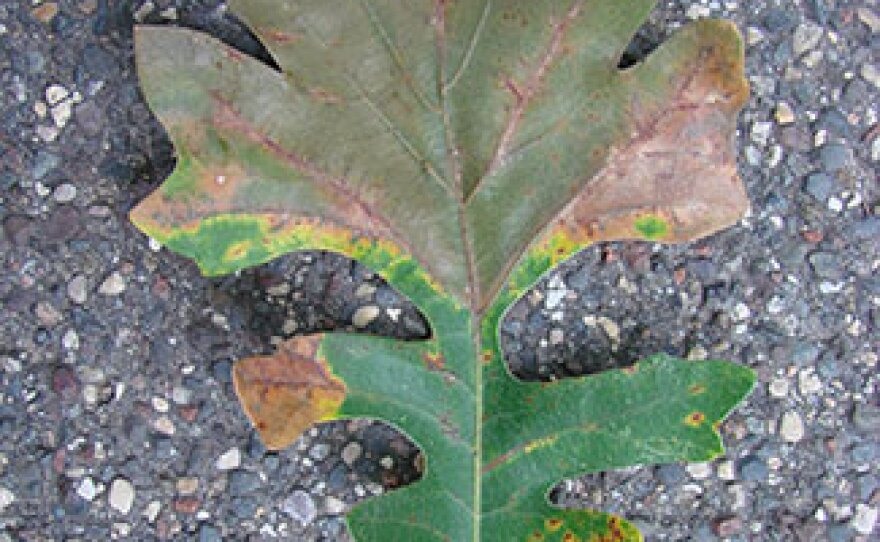Near historic rainfall across much of Minnesota between April and August is good news for the forests but has put additional strain on trees.
A very wet spring helped spread microscopic fungi carrying common leaf diseases including Marssonia leaf blight on aspen and bur oak blight.
The DNR advises leaf pathogens don't appear to be harmful to trees' overall health.
"They certainly make the tree look unhealthy, but healthy trees will fully leaf-out the following spring," the DNR stated in a newsletter.
The last several years of droughts will also impact trees’ growth for years to come, with some of the fall colors already seen this year attributed to the previous year’s drought.
The DNR recommends leaving trees with damaged leaves alone this fall, noting the forests needed rain after several years of deficits.
Dying branch tips on oak trees may indicate bigger problems, like root damage, insect infestations or oak decline. The DNR reports people should consider hiring a professional arborist if they're experiencing oak decline.
Funding for this environmental story was provided by the Minnesota Environment and Natural Resources Trust Fund as recommended by the Legislative-Citizen Commission on Minnesota Resources (LCCMR).
-
Plus: FEMA disaster recovery centers open on Leech Lake Reservation; Lt. Gov. Peggy Flanagan makes campaign stop in Grand Rapids; and Northland teams see mixed results in state tourneys.
-
Check out new songs and albums from Brandi Carlile, Genesis Owusu, Blue Moon Marquee and Northern Cree and more in this month's edition of Spin that Ish.
-
State and local law enforcement officials have somber reminders for hunters to keep an eye out for signs of missing persons while heading into the woods this firearms season.
-
Lt. Gov. Peggy Flanagan is running against Rep. Angie Craig for the DFL nomination in the race to fill retiring Sen. Tina Smith's seat.
-
Leech Lake Band members and their descendants are eligible to receive individual assistance from FEMA following the June 21, 2025, windstorm that swept through the western portion of the reservation.
-
On Oct. 18, 2025, 69-year-old Brian Herridge of Minnesota and 69-year-old Lorie Bryngelson of Colorado went into the water when the boat capsized.
-
Events this week include a Mesabi Community Band concert in Eveleth, an arts fundraiser in Bemidji and a 'Nutcracker' story time in Grand Rapids.
-
Plus: the city of Walker is accepting applications to fill a vacancy on the Walker City Council, with applications due by noon on Nov. 26, 2025.
-
The Beltrami County Board heard from the Kitchigami Regional Library System and Beltrami County Historical Society after voting to reduce funding for the institutions in 2026.
-
The vacancy was created by the resignation of Char Moore, who began her most recent term in January 2025. The appointed councilmember's term would last through December 2026.












